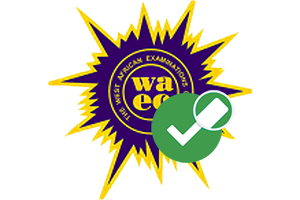WAEC Areas of Concentration for Chemistry 2024/2025
WAEC Areas of Concentration for Chemistry 2024/2025: Chemistry is one of the core subjects for science students who are preparing for the West African Senior School Certificate Examination (WASSCE). The exam is conducted by the West African Examinations Council (WAEC) and covers both theory and practical aspects of the subject. To excel in this exam, students need to study the WAEC syllabus for Chemistry and focus on the areas of concentration that are likely to be tested.
What is the WAEC Syllabus for Chemistry 2024/2025?
The WAEC syllabus for Chemistry is a document that outlines the aims and objectives, scope and sequence, content notes, and recommended textbooks for the subject. It also provides a format for the theory and practical papers, as well as sample questions and marking schemes. The syllabus is designed to test the students’ knowledge, understanding, and skills in Chemistry, as well as their ability to apply them to real-life situations.
The syllabus is divided into 19 topics, which are:
- Introduction to Chemistry
- Structure of the Atom
- Periodic Classification of Elements
- Chemical Bonding
- Stoichiometry and Chemical Reactions
- Acids, Bases and Salts
- Energy Changes in Chemical Reactions
- Rates of Chemical Reactions
- Chemical Equilibrium
- Electrochemistry
- Organic Chemistry
- Hydrocarbons
- Alkanols and Alkanoic Acids
- Organic Nitrogen Compounds
- Polymers and Macromolecules
- Environmental Chemistry
- Qualitative Analysis
- Quantitative Analysis
- Practical Chemistry
What are the WAEC Areas of Concentration for Chemistry 2024/2025?
The areas of concentration for Chemistry are the topics or subtopics that are most likely to be tested in the exam, based on past trends and analysis. These areas are not fixed or guaranteed, but they can serve as a guide for students to focus their revision and practice.
Some of the areas of concentration for Chemistry are:
- Introduction to Chemistry:
- Measurement of physical quantities
- Scientific measurements and their importance in chemistry
- Scientific methods, including observation, hypothesis, experimentation, and formulation of laws and theories
- Structure of the Atom:
- Gross features of the atom
- Atomic number, number of neutrons, isotopes, atomic mass, and mass number
- Meaning and representation of atoms and sub-atomic particles
- Electron configuration and orbitals
- Rules and principles for filling in electrons
- Standard Separation Techniques for Mixtures:
- Classification of mixtures
- Separation techniques like crystallization, distillation, precipitation, magnetization, chromatography, and sublimation
- Criteria for purity
- Periodic Chemistry:
- Periodicity of the elements
- Different categories of elements in the periodic table
- Periodic law and trends on the periodic table
- Properties and characteristics of elements in the periodic table
- Chemical Bonds:
- Interatomic bonding
- Formation of ionic and covalent bonds
- Properties of ionic and covalent compounds
- Coordinate (dative) covalent bonding
- Shapes of molecular compounds
- Metallic bonding and properties of metals
- Intermolecular forces, including hydrogen bonding and van der Waals forces
- Stoichiometry and Chemical Reactions:
- Symbols, formulae, and equations
- Chemical symbols and IUPAC names of chemical compounds
- Laws of chemical combination
- Amount of substance, mole ratios, and concentration terms
- Preparation of solutions and dilution
- Mole ratios and stoichiometry of chemical reactions
- States of Matter:
- Kinetic theory of matter
- Changes of state of matter
- Diffusion
- Gases, including the gas laws and laboratory preparation of gases
- Liquids, including vapour and gases
- Solids, including characteristics, types, and properties
- Energy and Energy Changes:
- Energy and enthalpy
- Energy changes and their effects, including exothermic and endothermic processes
- Equilibrium systems and Le Chatelier’s principle
- Redox Reactions:
- Oxidation and reduction processes
- Oxidizing and reducing agents
- Redox equations
- Electrochemical cells, including standard electrode potential and cell notation
- Electrolysis, including electrolytic cells, principles of electrolysis, factors influencing discharge of species, Faraday’s laws, and practical applications
- Solubility of Substances:
- General principles of solubility
- Practical application of solubility, including solubility curves
- Factors affecting solubility
- Qualitative analysis of salts
- Chemical Kinetics and Equilibrium System:
- Rate of reactions and factors affecting rates
- Theories of reaction rates
- Equilibrium, including Le Chatelier’s principle
- Redox Reactions:
- Oxidation and reduction processes
- Oxidizing and reducing agents
- Redox equations
- Electrochemical cells, including standard electrode potential and cell notation
- Chemistry, Industry, and the Environment:
- Chemical industry and its impact on the environment
- Pollution (air, water, and soil pollution)
- Biotechnology and its applications
- Basic Biochemistry and Synthetic Polymers:
- Proteins, including sources, properties, and uses
- Amino acids and their classification
- Fats/oils, including sources, properties, and soap preparation
- Carbohydrates, their sources, properties, and uses
- Synthetic polymers, their properties, and uses
How to Study for WAEC Chemistry Exam 2024/2025?
To study effectively for the WAEC Chemistry exam, students need to adopt a smart and strategic approach that involves the following steps:
- Review the syllabus and identify the areas of concentration.
- Read the recommended textbooks or other reliable sources to understand the concepts and principles.
- Make notes or summaries of the key points and formulas.
- Solve past questions or practice questions from different sources to test your knowledge and skills.
- Revise your notes and correct your mistakes.
- Practice your practical skills by performing experiments or watching videos.
- Join a study group or seek help from a tutor if you have any doubts or difficulties.
Conclusion
Chemistry is a fascinating and important subject that requires a lot of dedication and hard work to master. By following the WAEC syllabus for Chemistry and focusing on the areas of concentration, students can prepare well for the exam and achieve their desired grades. However, students should also remember that studying Chemistry is not only about passing exams, but also about developing a scientific mindset and a curiosity for the natural world.
FAQs
How many papers are there in WAEC Chemistry exam?
There are three papers in WAEC Chemistry exam: Paper 1 (Objective), Paper 2 (Theory), and Paper 3 (Practical).
How many questions are there in each paper?
Paper 1 has 50 multiple-choice questions, Paper 2 has two sections: Section A (five compulsory short-answer questions) and Section B (five optional essay questions, out of which three must be answered), and Paper 3 has three compulsory practical questions.
How long is each paper?
Paper 1 is 50 minutes, Paper 2 is 2 hours, and Paper 3 is 2 hours and 30 minutes.
How is each paper marked?
Paper 1 is marked out of 50 marks, Paper 2 is marked out of 100 marks, and Paper 3 is marked out of 50 marks. The total mark for the subject is 200 marks.




I am interested and I lernt a lot